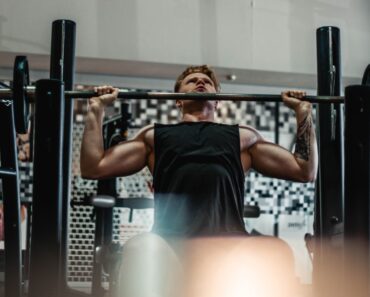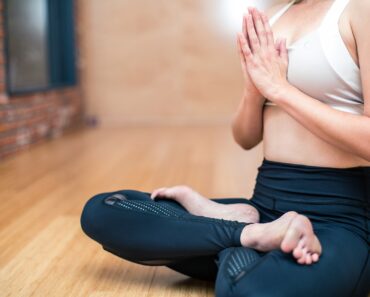ADVERTISEMENT

Running is a popular and accessible form of exercise that provides numerous health benefits, from cardiovascular conditioning to stress relief. Whether you are a seasoned runner or just starting on your running journey, incorporating specific exercises into your routine can help you become a better and more efficient runner. These exercises target key muscle groups, improve running form, and enhance overall strength and endurance.
In this article, we will explore the exercises that can take your running to the next level and help you achieve your running goals.
Squats
Squats are a fundamental exercise that targets the quadriceps, hamstrings, glutes, and core muscles. Strong lower body muscles are essential for maintaining proper running form and preventing injuries. Squats not only help build leg strength but also improve stability and balance.
How to Perform Squats:
- Stand with your feet shoulder-width apart or slightly wider.
- Keep your chest up, back straight, and shoulders relaxed.
- Lower your hips back and down, as if sitting in a chair.
- Keep your knees in line with your toes and lower until your thighs are parallel to the ground or slightly below.
- Push through your heels to return to the starting position.
Aim to perform three to four sets of 10-15 repetitions of squats at least three times per week. As you progress, consider adding resistance using dumbbells or a barbell to continue challenging your muscles.
Lunges
Lunges are another excellent exercise for targeting the muscles in your lower body, including the quadriceps, hamstrings, glutes, and calves. They also help improve balance and stability, which are crucial for running on uneven terrain.
How to Perform Lunges:
- Stand with your feet together.
- Step one foot forward and lower your body until both knees are at a 90-degree angle.
- Push through your front heel to return to the starting position.
- Repeat on the other leg.
Perform three to four sets of 10-12 repetitions of lunges on each leg at least three times per week. To add variety, you can perform walking lunges or use dumbbells to increase the challenge.
Deadlifts
Deadlifts are a powerful exercise that targets the muscles in your back, glutes, hamstrings, and core. They help improve running economy, which is the efficiency with which your body uses oxygen while running, leading to better endurance.
How to Perform Deadlifts:
- Stand with your feet shoulder-width apart and a barbell in front of you.
- Hinge at the hips while keeping your back straight and chest up, grip the barbell with hands slightly wider than shoulder-width apart.
- Pull the barbell towards your body, engaging your core and back muscles.
- Lower the barbell back to the ground with control.
Perform three to four sets of 8-10 repetitions of deadlifts at least three times per week. Start with a lighter weight to ensure proper form, and gradually increase the load as you become more confident and proficient in the movement.
Planks
Planks are an excellent exercise for building core strength, which is crucial for maintaining stability and proper posture while running. A strong core also helps transfer power efficiently from your upper body to your lower body.
How to Perform Planks:
- Start in a push-up position with your arms extended and hands directly below your shoulders.
- Engage your core and hold your body in a straight line from head to heels.
Aim to hold the plank position for 30-60 seconds, gradually increasing the duration as you build strength and endurance. Perform the plank exercise at least three times per week as part of your workout routine.
Calf Raises
Strong calf muscles are essential for efficient running, especially during uphill climbs and toe-off phases. Calf raises target the gastrocnemius and soleus muscles in the calves, helping to improve ankle stability and power.
How to Perform Calf Raises:
- Stand on the edge of a step or elevated surface with your heels hanging off the edge.
- Rise onto your toes, lifting your heels as high as you can.
- Lower your heels back down to the starting position.
Perform three to four sets of 15-20 repetitions of calf raises at least three times per week. You can perform calf raises on both legs simultaneously or focus on one leg at a time to increase the challenge.
Step-Ups
Step-ups are a functional exercise that targets the quadriceps, glutes, and hamstrings. They help improve single-leg strength and stability, which is crucial for maintaining balance and control while running.
How to Perform Step-Ups:
- Stand in front of a step or bench.
- Step one foot onto the step, pressing through your heel to lift your body up.
- Step back down to the starting position.
- Repeat on the other leg.
Perform three to four sets of 10-12 repetitions of step-ups on each leg at least three times per week. To increase the intensity, hold dumbbells in each hand while performing the exercise.
Hip Bridges
Hip bridges target the glutes and hamstrings and help improve hip mobility and stability. Strong glutes are essential for maintaining proper running form and preventing common running injuries.
How to Perform Hip Bridges:
- Lie on your back with your knees bent and feet flat on the ground.
- Engage your core and lift your hips off the ground, squeezing your glutes at the top.
- Lower your hips back down to the starting position.
Perform three to four sets of 12-15 repetitions of hip bridges at least three times per week. For variation, you can place a resistance band around your thighs to add extra resistance.
Conclusion
Incorporating specific exercises into your workout routine can make you a better runner by targeting key muscle groups, improving running form, and enhancing overall strength and endurance. Squats, lunges, deadlifts, planks, calf raises, step-ups, and hip bridges are all effective exercises that can complement your running training and help you achieve your running goals.
As with any exercise program, it is essential to start gradually and listen to your body. Proper form is crucial to prevent injuries, so consider seeking guidance from a certified fitness trainer if you are new to these exercises. Remember to combine these exercises with a well-rounded training plan that includes running, rest days, and proper nutrition to optimize your running performance and overall fitness level.
By incorporating these exercises into your routine and staying consistent with your training, you can become a better and more efficient runner, enjoying the many physical and mental benefits that running has to offer.
ADVERTISEMENT





